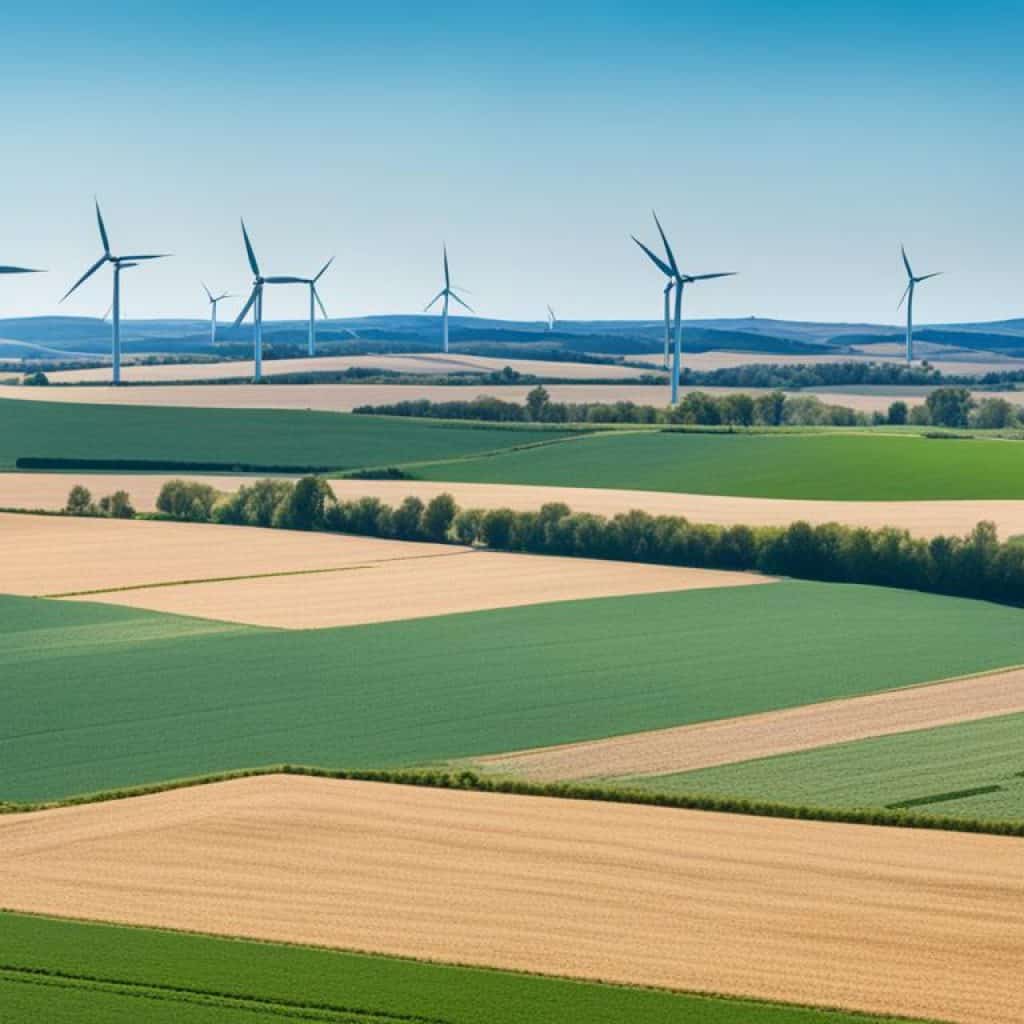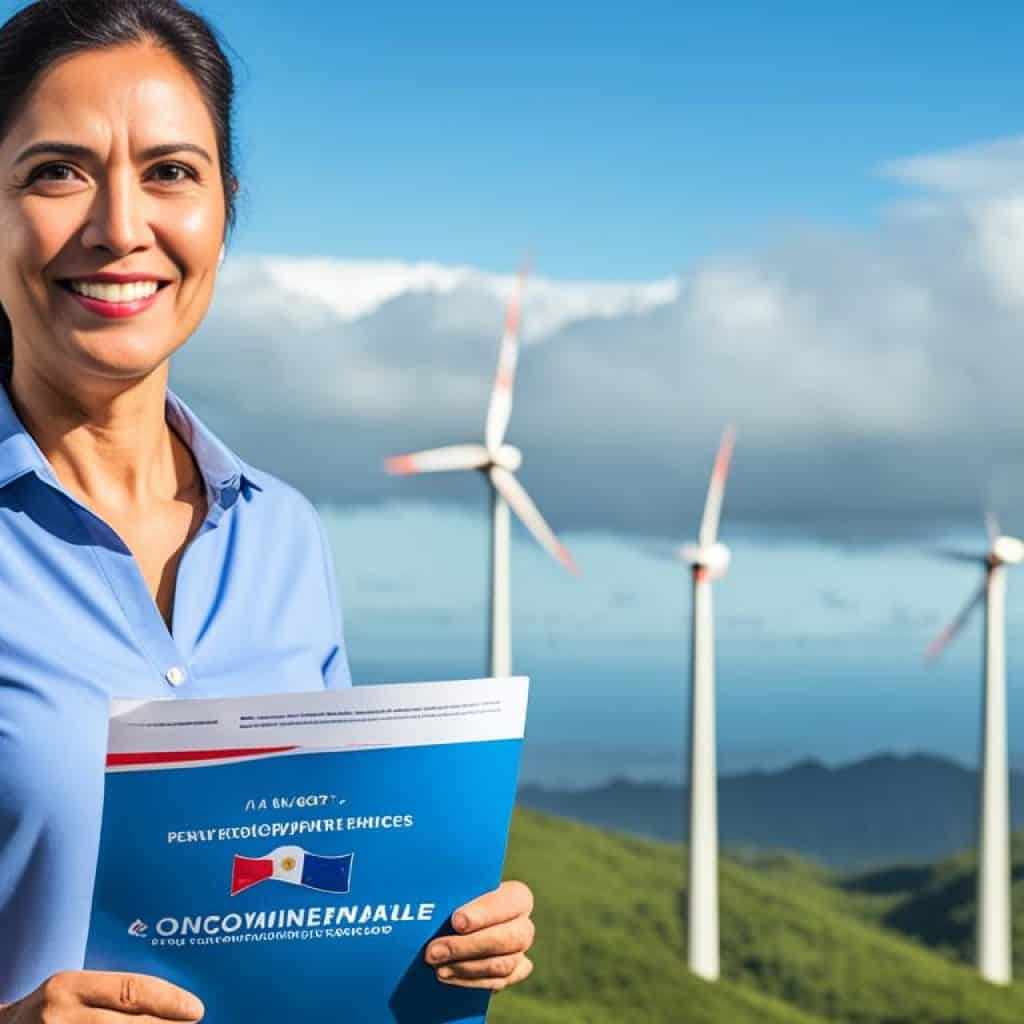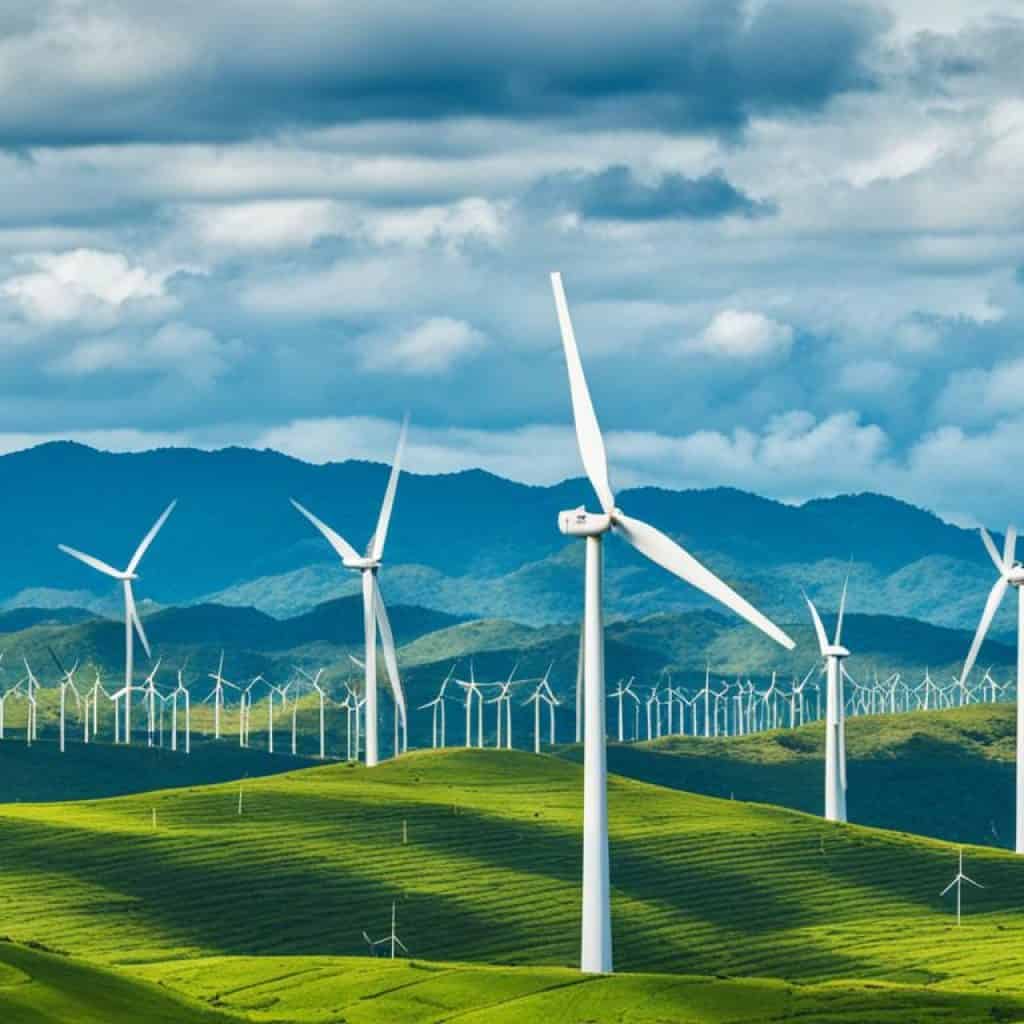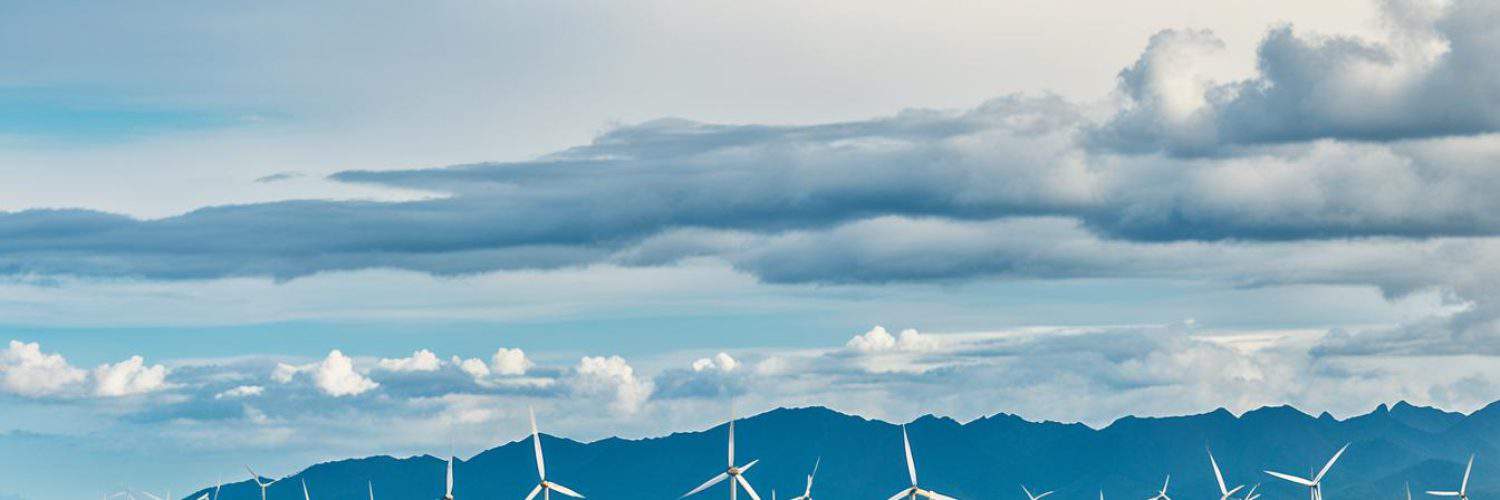As the world seeks sustainable energy solutions to combat climate change, the Philippines has emerged as a leading force in the pursuit of renewable energy. In the archipelago’s quest for eco-friendly energy generation, windmills have taken center stage. But just how much impact can wind turbine technology have in reducing the country’s carbon footprint? Are wind farm projects the key to a cleaner, greener future for the nation? Let’s explore the rise of windmills in the Philippines and the role they play in spearheading clean energy initiatives.
Key Takeaways:
- The Philippines is embracing wind energy as a sustainable solution to meet its energy demands while reducing its carbon footprint.
- Windmills in the Philippines contribute to the country’s alternative energy solutions and push towards a cleaner, greener future.
- Wind turbine technology and wind farm projects are at the forefront of the nation’s clean energy initiatives.
- By harnessing wind power, the Philippines aims to significantly reduce its reliance on fossil fuels and promote sustainable development.
- Investing in wind energy can lead to a more resilient and eco-friendly energy sector in the Philippines.
The Current Pioneering State of Renewable Energy
The Philippines recognizes the importance of renewable energy and is at the forefront of its development. The country is taking substantial steps towards a more sustainable energy future as it addresses energy challenges, both in remote regions and growing urban areas. The progress made in renewable energy serves as a symbol of resilience and determination to achieve a net-zero lifestyle.
Harnessing the Winds: The Potential of Wind Energy
The Philippines is geographically blessed with strong monsoons, making it an ideal location for harnessing wind energy. The country has implemented numerous wind energy projects across its islands, showcasing its commitment to sustainable construction and renewable energy sources. Wind energy not only meets a significant portion of the nation’s energy demand but also aligns with the collective goal of addressing climate change and promoting sustainability.
With its vast coastline and mountainous landscapes, the Philippines experiences a unique wind pattern that creates a consistent source of wind power. This abundant resource allows the country to tap into a clean and renewable energy solution, reducing its reliance on fossil fuels and contributing to a greener future.
Wind turbines, strategically placed across the Philippines, serve as symbols of progress and innovation. These towering structures capture the kinetic energy of the wind and convert it into electricity, powering homes, businesses, and industries.
“Wind energy is a game-changer for the Philippines. It not only provides a sustainable source of electricity but also creates employment opportunities and stimulates economic growth,” says Dr. Maria Santos, a renowned expert in renewable energy.
One of the key advantages of wind energy is its compatibility with sustainable construction. Wind farms can be established on existing agricultural lands or coastal areas, minimizing the need for additional land acquisition. Additionally, the construction process for wind turbines generates fewer greenhouse gas emissions compared to traditional power plants, making wind energy a viable solution in combating climate change.
Furthermore, wind energy installations can coexist with other land uses, promoting biodiversity and preserving natural habitats. This harmonious relationship between wind power and the environment showcases the commitment of the Philippines to sustainable development.
To visualize the impact of wind energy in the Philippines, consider the following:
| Wind Energy Statistics in the Philippines | |
|---|---|
| Total Installed Wind Power Capacity | 1,972 Megawatts |
| Equivalent Number of Households Powered | Approximately 1.5 million |
| Annual CO2 Emissions Avoided | 1.2 million metric tons |
These statistics demonstrate the significant contribution of wind energy to the reduction of carbon dioxide emissions and the overall transition to a more sustainable energy mix in the Philippines.
With ongoing advancements in wind turbine technology and a continued focus on renewable energy development, the Philippines is poised to further harness the power of the wind, making significant strides towards a cleaner and greener future for the nation.
Innovations at the Forefront: Tech Advances and Wind Energy
Technological advancements in wind turbine technology have revolutionized the field of wind energy in the Philippines. Through a combination of international collaboration and local expertise, these advancements have significantly enhanced the efficiency and effectiveness of wind energy generation in the country. With an increased focus on renewable energy sources, these innovations are paving the way for a cleaner and more sustainable future.
One of the key areas of technological advancement in wind energy is the development of more efficient and durable wind turbine designs. These advancements have resulted in increased energy output, improved reliability, and reduced maintenance costs. By harnessing the power of the wind more effectively, these advanced wind turbine technologies have made wind energy a more viable and attractive option for meeting the country’s energy needs.

The Philippines is not just benefiting from international technological collaborations; it is also harnessing its local expertise to drive innovation in wind turbine technology. By nurturing local talent and fostering a culture of research and development, the country has been able to make significant contributions to the field. This collaboration between international experts and local innovators has resulted in the creation of highly efficient and environmentally friendly wind turbine systems.
“The synergy between technology and nature has immense potential for sustainable architecture and eco-friendly energy generation. The innovations in wind turbine technology highlight the transformative power of shared knowledge and local ingenuity.”
These technological advancements have not only increased the efficiency of wind energy but have also made it more cost-effective. As the cost of traditional energy sources continues to rise, wind energy has become an attractive option for both individuals and businesses looking to reduce their energy costs and carbon footprint. The combination of technological advancements, local expertise, and renewable energy sources is propelling the Philippines towards a greener and more sustainable future.
Wind Energy and Economic Prosperity
The transition to wind energy in the Philippines not only creates job opportunities but also offers economic stability. Unlike traditional energy sources that fluctuate in price, wind energy provides price stability over time. The abundance of wind resources across the islands attracts domestic and international investments, leading to sustainable profitability in the renewable energy sector. These investments contribute to the growth of the national economy and bring the Philippines closer to achieving its renewable energy targets.
Job Creation
Wind energy projects in the Philippines generate employment opportunities across various sectors. From the construction and maintenance of wind turbines to the development of supporting infrastructure and the manufacturing of wind turbine components, there is a significant demand for skilled workers. This job creation not only promotes economic prosperity but also enhances human capital development and supports local communities.
Economic Stability
Wind energy provides a stable source of power that is less prone to price volatility compared to fossil fuels. This stability ensures a consistent and reliable energy supply, which is crucial for economic growth and development. By reducing the country’s dependence on imported fossil fuels, wind energy contributes to a more sustainable and secure energy future, shielding the national economy from fluctuations in fuel prices.
| Benefits of Wind Energy for Economic Prosperity | Examples |
|---|---|
| Job Creation | Thousands of new jobs in wind turbine manufacturing, installation, and maintenance |
| Investments | Domestic and international investments in wind energy projects |
| Price Stability | Wind energy offers long-term price stability compared to fossil fuels |
| Sustainable Profitability | Renewable energy sector contributes to a growing and sustainable national economy |
Domestic and International Investments
The renewable energy sector, including wind energy, attracts significant investments from both domestic and international sources. These investments spur economic growth and stimulate various industries associated with the development and operation of wind energy projects. From engineering and construction firms to equipment suppliers and service providers, the renewable energy sector creates a ripple effect of economic opportunities that benefit the entire supply chain.
Contributing to the National Economy
The shift towards wind energy aligns with the Philippines’ goal of promoting sustainable development and reducing greenhouse gas emissions. By expanding the renewable energy sector, the country not only achieves its environmental targets but also strengthens the national economy. The revenue generated from wind energy projects contributes to the overall growth of the country while creating a greener and more sustainable future for generations to come.
Wind energy’s positive impact on job creation, economic stability, and investments in the renewable energy sector plays a crucial role in shaping the national economy. By harnessing the power of the wind, the Philippines is not only reducing its reliance on traditional energy sources but also driving economic growth and prosperity. Embracing wind energy is a pathway towards a sustainable future that benefits both the environment and the people.
Policy Advocacy: The Role of Government Support
The Philippine government plays a crucial role in driving the nation’s transition towards renewable energy and sustainable architecture. Through its unwavering commitment to the National Renewable Energy Program (NREP), an extensive framework developed by the Department of Energy (DOE), the government aims to accelerate the country’s adoption of renewable energy resources while mitigating carbon dioxide emissions and addressing climate change on a global scale.
The NREP sets ambitious targets for renewable energy output and provides a strategic roadmap for achieving renewable energy initiatives. By leveraging comprehensive government policies, the Philippines fosters an environment conducive to the growth and development of wind energy projects and other sustainable practices.
“The National Renewable Energy Program serves as a catalyst for change, guiding our nation towards a cleaner and greener future. We are deeply committed to reducing carbon dioxide emissions and ensuring the success of renewable energy initiatives, such as wind energy.”
A Comprehensive Framework for Sustainability
The National Renewable Energy Program focuses not only on harnessing renewable energy sources but also on promoting sustainable architecture. By integrating eco-friendly design principles and practices, the program encourages the construction of energy-efficient buildings and structures that minimize carbon emissions and contribute to climate change mitigation efforts.
Collaboration and Partnerships
The success of renewable energy initiatives heavily relies on collaboration and partnerships between the government, private sector, and local communities. The Philippine government actively engages with industry stakeholders to foster an ecosystem that supports sustainable development, providing incentives and support systems to ensure the growth of the renewable energy sector.
Furthermore, the government actively seeks collaborations with international organizations and neighboring countries to share best practices, exchange knowledge, and drive innovation in the field of renewable energy.
Government Incentives and Support
Recognizing the importance of government support, the Philippines implements various incentives and financial mechanisms to encourage the adoption of renewable energy technologies. This includes tax breaks, grants, and guaranteed price structures that provide stability and attract private investments into the renewable energy sector.
Government Policies and Initiatives
| Policies | Impact |
|---|---|
| National Renewable Energy Program (NREP) | Accelerates the adoption of renewable energy resources and sustainable architecture, setting ambitious targets for renewable energy output and reducing carbon dioxide emissions. |
| Renewable Portfolio Standards (RPS) | Requires electric utilities to source a certain percentage of their energy from renewable sources, stimulating market demand for renewable energy and increasing the share of sustainable power in the energy mix. |
| Feed-in Tariff (FIT) System | Guarantees fixed payments to renewable energy producers for a specific duration, incentivizing investment in renewable energy projects and ensuring price stability for clean power generation. |

Through its government policies and initiatives, the Philippines demonstrates its commitment to a sustainable future. The active support from the government and collaborative efforts with various stakeholders help create an enabling environment for wind energy projects and other renewable energy initiatives to flourish. With ongoing government backing, the Philippines is poised to make significant contributions to global climate change mitigation and set an example for other nations seeking a cleaner and more sustainable future.
Embracing a Net-Zero Lifestyle
Embracing wind energy signifies the Philippines’ commitment to a net-zero lifestyle. By transitioning towards sustainable energy sources, such as wind power, the nation is taking a bold step towards a better world for current and future generations. This shift towards net-zero living is driven by a deep-rooted sense of sustainability, resilience, and eco-consciousness.
The impact of wind energy on the environment and society is profound. It undeniably aligns with the collective vision of achieving a sustainable and cleaner future. Windmills in the Philippines are at the forefront of this transformative journey, harnessing the natural power of the wind to generate electricity and reduce dependence on non-renewable energy sources.
Transitioning Towards a Sustainable Future
Transitioning to wind energy signifies the Philippines’ commitment to prioritize sustainability in its energy consumption. By embracing wind power as a reliable and renewable energy source, the nation is actively reducing its carbon footprint and mitigating the impacts of climate change. This commitment to sustainability fosters a sense of responsibility towards the environment and future generations.
Advantages of Net-Zero Living
- Reduces greenhouse gas emissions
- Minimizes reliance on fossil fuels
- Promotes the use of clean and renewable energy
- Enhances energy efficiency and conservation
- Drives innovation and technological advancements
- Creates a resilient and sustainable society
Adopting a net-zero lifestyle through wind energy not only contributes to a greener planet but also sets an example for other nations to follow. It inspires eco-consciousness and encourages individuals, communities, and industries to take active roles in achieving sustainability goals.
In embracing wind energy, the Philippines is paving the way for a net-zero lifestyle, where sustainability and resilience go hand in hand. It’s a powerful testament to the nation’s commitment to a hopeful and sustainable future for all.
Investing in wind energy and embracing a net-zero lifestyle aligns with the global movement towards sustainable development and climate resilience. By harnessing the power of the wind, the Philippines is making a lasting impact on the environment, fostering sustainable economic growth, and creating a better world for generations to come.
The Sembrano Wind Project: Harnessing Wind Power in Rizal
The Sembrano Wind Project, located in Mt. Sembrano, Rizal, is a prime example of how the Philippines is harnessing wind power to generate clean and renewable energy. Through a comprehensive wind resource assessment, it was determined that Mt. Sembrano is situated in a favorable wind corridor, making it an ideal location for wind energy generation. This project aims to provide clean and sustainable power to the Luzon grid, taking full advantage of the abundant wind resources in the area.

The Sembrano Wind Project represents a significant investment in renewable energy infrastructure, contributing to the country’s efforts towards a greener and more sustainable future. By harnessing the power of wind, this project reduces reliance on fossil fuels and helps decrease carbon emissions, furthering the Philippines’ commitment to combatting climate change.
Benefits of the Sembrano Wind Project
The Sembrano Wind Project offers a multitude of benefits, including:
- Reduced carbon footprint: By utilizing wind power, the Sembrano Wind Project significantly reduces greenhouse gas emissions, contributing to the global fight against climate change.
- Renewable energy generation: The project harnesses the power of wind, a clean and renewable energy source, ensuring a sustainable power supply for the Luzon grid.
- Job creation and economic growth: The development of the project creates employment opportunities and stimulates local economies through various aspects, including construction, operation, and maintenance.
- Enhanced energy security: The Sembrano Wind Project diversifies the energy mix, reducing reliance on imported fuel sources and enhancing the country’s energy security.
The Sembrano Wind Project serves as a model for future wind energy initiatives in the Philippines. By capitalizing on the country’s abundant wind resources, the project paves the way for increased clean energy generation and a more sustainable future.
| Benefits of the Sembrano Wind Project |
|---|
| Reduced carbon footprint |
| Renewable energy generation |
| Job creation and economic growth |
| Enhanced energy security |
Laying the Foundation for Success
Before the development of the Sembrano Wind Project, several crucial steps were taken to ensure its success. This section explores the technical studies, permits, and support from local stakeholders that played a vital role in laying the foundation for the project.
Technical Studies and Wind Mapping
Extensive technical studies were conducted to assess the viability of the Sembrano Wind Project. These studies included comprehensive wind mapping, enabling the project planners to identify the most favorable areas for harnessing wind energy. By understanding the wind patterns and intensity in the specific region, the project team could optimize the placement and orientation of the wind turbines, maximizing their energy generation potential.
Obtaining Permits and Clearances
Developing a wind energy project involves obtaining necessary permits and clearances from various government agencies. In the case of the Sembrano Wind Project, the project proponents diligently complied with environmental and safety regulations. By acquiring the required permits, they ensured that the project would be implemented in an environmentally responsible manner, minimizing any potential negative impact on the surroundings.
Support from Local Stakeholders
The successful implementation of the Sembrano Wind Project would not have been possible without the support of local stakeholders. The barangays, local government, and landowners played a crucial role in providing their endorsement and cooperation. Their engagement and support contributed to the smooth progress of the project and fostered a sense of ownership among the local community.
Through technical studies, obtaining permits, and garnering support from local stakeholders, the Sembrano Wind Project set itself up for success. These crucial preparatory steps ensured that the project would be implemented with careful consideration for its impact on the environment and a shared vision for a sustainable future.
All Systems Go
The Sembrano Wind Project is poised to meet the ever-growing power demand in Luzon with a clean and sustainable energy solution. Positioned near Metro Manila, this project minimizes grid constraints and transmission loss, ensuring an efficient and reliable source of power for the region.
With the support of esteemed partners, such as Hanging ng Amihan Holdings and Energon Philippine Holdings, all the necessary components are in place to bring the Sembrano Wind Project closer to reality. This collaboration between industry leaders is driving the development of this clean energy initiative, ultimately benefiting the local communities and the environment.
Boosting Efficiency and Reliability
The Sembrano Wind Project’s strategic location in proximity to Metro Manila plays a pivotal role in minimizing grid constraint and transmission loss, ensuring an uninterrupted supply of clean energy. This optimized placement enables efficient transmission and distribution, minimizing energy wastage and maximizing the project’s impact on power demand fulfillment.
Collaboration for Sustainability
Partnering with Hanging ng Amihan Holdings and Energon Philippine Holdings provides essential resources, expertise, and financial support to expedite the Sembrano Wind Project’s development. This collective effort emphasizes the commitment to sustainable energy solutions and paves the way for a greener future in the Philippines.
Key Benefits of the Sembrano Wind Project:
- Meeting the growing power demand in Luzon sustainably
- Minimizing grid constraint and transmission loss
- Contributing to a cleaner and greener energy landscape
- Strengthening partnerships for sustainable development
Conclusion
Windmills in the Philippines symbolize more than just structures; they represent a sustainable future for the nation. The country’s commitment to harnessing wind power through projects like the Sembrano Wind Project is a significant step towards transitioning to renewable energy sources and reducing the carbon footprint. With government support, technological advancements, and the collaboration of local stakeholders, windmills in the Philippines are leading the way towards a more sustainable and eco-friendly nation.
The impact of wind energy in the Philippines is profound. By tapping into this abundant natural resource, the country is not only meeting a substantial portion of its energy demand but also actively contributing to a global shift towards clean and renewable energy. Wind energy is not just an alternative; it is becoming a mainstream solution for a sustainable future not only in the Philippines but worldwide.
As the nation embraces wind energy and other renewable sources, it is paving the way for a greener and more sustainable future. The Sembrano Wind Project exemplifies the country’s dedication to alternative energy solutions and the transition to a cleaner energy landscape. By reducing reliance on traditional energy sources and embracing wind power, the Philippines is making significant strides towards a more sustainable and resilient future.


















Add comment